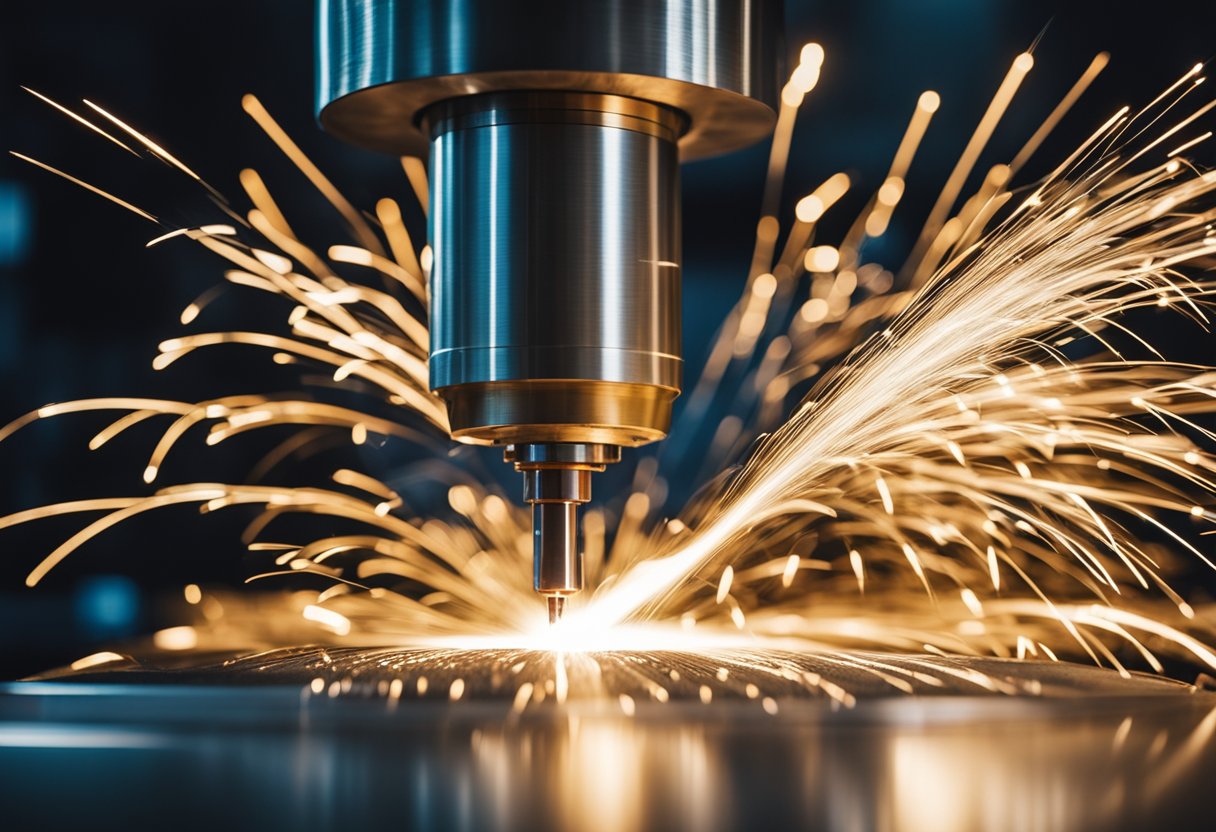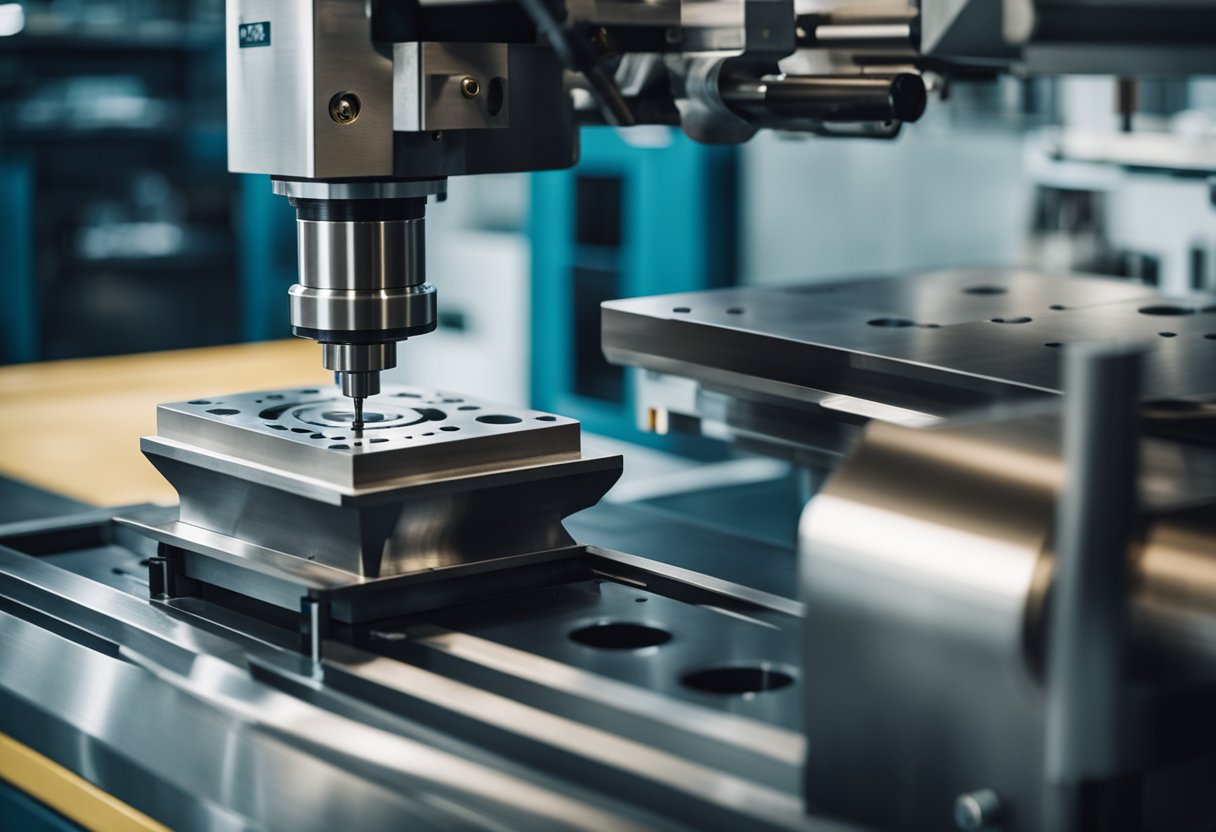CNC Machining: The Basics and Benefits
Computer Numerical Control (CNC) is a technology that has revolutionized the manufacturing industry. It involves the use of computer software to control machines, such as lathes, mills, routers, and grinders, to produce high-precision parts and components. CNC machines are widely used in various industries, including aerospace, automotive, electronics, and medical.

The use of CNC machines has significantly increased productivity, accuracy, and efficiency in manufacturing. CNC machines can produce complex shapes and designs that would be difficult or impossible to achieve using traditional manufacturing methods. The precision and accuracy of CNC machines also reduce the need for manual labor, which saves time and reduces the risk of errors.
The use of numerical control (NC) dates back to the 1940s, but it was not until the 1970s that CNC technology became widely available. Today, CNC machines are an essential part of modern manufacturing, and the technology continues to advance, with new features and capabilities being added regularly. CNC machines are expected to play a critical role in the future of manufacturing, as they offer a high degree of precision, accuracy, and flexibility.
Fundamentals of CNC
CNC Systems and Components
CNC, or Computer Numerical Control, is a manufacturing process that utilizes computer programs to control machines. A typical CNC system consists of a machine, computer, and controller. The machine is responsible for physically shaping the material, while the computer and controller work together to translate the design into machine instructions.
The controller is the brain of the system, and it interprets the design data to control the movement of the machine. The controller receives input from the computer and translates it into signals that the machine can understand. The computer is responsible for generating the design data, and it uses CAD (Computer-Aided Design) and CAM (Computer-Aided Manufacturing) software to create 3D models and toolpaths.
Understanding CNC Programming
CNC programming is the process of creating instructions that the CNC machine will follow to produce a part. The programming language used in CNC is called G-code, which is a series of commands that tell the machine what movements to make and how fast to make them. M-code is another language used in CNC programming, and it is used to control auxiliary functions such as coolant and spindle speed.
To create a CNC program, the programmer must first create a 3D model of the part in CAD software. Once the model is complete, the programmer will use CAM software to generate a toolpath for the machine to follow. The toolpath is a series of coordinates that the machine will move to in order to create the part.
Types of CNC Machines
There are many different types of CNC machines, each designed for specific applications. Some common types include:
- CNC Mills: These machines use rotary cutters to remove material from a workpiece. They are often used for creating complex shapes and features in metal, plastic, and wood.
- CNC Lathes: These machines use a rotating workpiece and cutting tools to create cylindrical shapes. They are often used for creating parts with a high degree of symmetry, such as shafts and bearings.
- CNC Routers: These machines use a spinning cutting tool to remove material from a workpiece. They are often used for creating intricate designs in wood, plastic, and foam.
- CNC Plasma Cutters: These machines use a high-temperature plasma torch to cut through metal. They are often used for creating parts with complex shapes and contours.
In conclusion, CNC technology has revolutionized the manufacturing industry by enabling precise and efficient production of complex parts. By understanding the fundamentals of CNC systems and programming, manufacturers can take advantage of this technology to improve their processes and stay competitive in the global market.
CNC Machining Processes
CNC machining is a manufacturing process that involves the use of computer-controlled machines to produce high-quality parts and components. CNC machines are capable of performing a wide range of machining operations, including milling, turning, drilling, and boring. In this section, we will explore the various CNC machining processes in more detail.
Milling and Turning
CNC milling and turning are two of the most common machining processes used in the manufacturing industry. Milling involves the use of a rotating cutting tool to remove material from a workpiece, while turning involves the use of a stationary cutting tool to remove material from a rotating workpiece.
CNC milling machines are capable of producing complex shapes and contours with high precision and accuracy. They are commonly used in the production of parts for the aerospace, automotive, and medical industries, among others.
CNC turning machines, on the other hand, are used to produce cylindrical parts, such as shafts and bushings. They are also commonly used in the production of parts for the aerospace, automotive, and medical industries.
Drilling and Boring
Drilling and boring are two other common machining processes that are often used in conjunction with milling and turning. Drilling involves the use of a rotating cutting tool to create holes in a workpiece, while boring involves the use of a single-point cutting tool to enlarge an existing hole.
CNC drilling machines are capable of producing holes with high precision and accuracy, making them ideal for the production of parts for the aerospace, automotive, and medical industries.
CNC boring machines, on the other hand, are used to produce parts with complex internal geometries, such as engine blocks and transmission cases. They are also commonly used in the production of parts for the aerospace, automotive, and medical industries.
Advanced Machining Techniques
In addition to the basic machining processes discussed above, there are a number of advanced machining techniques that are used in the manufacturing industry. These include:
- Electrochemical machining (ECM), which uses an electrolyte and an electrically charged tool to remove material from a workpiece
- Laser cutting, which uses a high-powered laser to cut through a workpiece
- Waterjet cutting, which uses a high-pressure stream of water to cut through a workpiece
These advanced machining techniques are often used in the production of parts for the aerospace, automotive, and medical industries, where high precision and accuracy are critical.
Materials and Tools

Material Considerations
When it comes to CNC machining, the choice of material plays a crucial role in the overall quality and durability of the end product. The most commonly used materials for CNC machining include steel, plastics, wood, metals, glass, aluminum, stainless steel, titanium, and composites. Each material has its own set of properties that must be taken into account before selecting it for a project.
For example, steel is known for its strength and durability, making it an excellent choice for heavy-duty applications. Plastics, on the other hand, are lightweight and easy to machine, making them ideal for rapid prototyping. Wood is a popular choice for decorative items and furniture, while metals such as aluminum and stainless steel are often used in aerospace and automotive applications due to their corrosion resistance.
Tooling and Equipment
In addition to materials, the type of cutting tool and equipment used in CNC machining also affects the quality of the end product. Cutting tools come in various shapes and sizes and are made from different materials such as high-speed steel, carbide, and diamond. The choice of cutting tool depends on the material being machined and the desired finish.
Equipment such as machine tools, lathes, and mills are also essential for CNC machining. These machines use computer-controlled movements to precisely cut and shape the material. The type of equipment used depends on the complexity of the project and the size of the material being machined.
In summary, selecting the right combination of materials, cutting tools, and equipment is crucial for successful CNC machining. By considering the properties of each material and selecting the appropriate cutting tools and equipment, manufacturers can produce high-quality and durable products.
Applications and Industries

Industrial and Commercial Uses
CNC machines have become an integral part of modern manufacturing processes, and their use is widespread across various industries. The aerospace industry, for example, uses CNC machines to produce complex components with high precision. Similarly, the automotive industry relies heavily on CNC machines for manufacturing parts such as engine blocks, transmission cases, and brake components.
CNC machines are also widely used in the 3D printing industry. They are used to create molds and prototypes for new products, which can then be mass-produced using additive manufacturing techniques.
In addition to these industries, CNC machines are also used in the production of consumer goods, such as furniture, toys, and electronics. They are particularly useful for creating intricate designs and patterns on these products.
CNC in Product Development
CNC machines have revolutionized the product development process, allowing designers to create prototypes and test them quickly and efficiently. This has led to faster product development cycles and reduced costs.
CNC machines are particularly useful in subtractive manufacturing, where material is removed from a block or sheet of material to create a final product. This process is commonly used in the production of metal parts, but can also be used with other materials such as plastics and composites.
Additive manufacturing, on the other hand, involves building up a product layer by layer using materials such as plastics, metals, and ceramics. CNC machines are used in this process to create molds and fixtures, which are then used to produce the final product.
Overall, the use of CNC machines has transformed the manufacturing industry, allowing for faster and more efficient production of high-quality products. As technology continues to evolve, it is likely that CNC machines will become even more versatile and widespread in their applications.
Frequently Asked Questions
How does a CNC machine operate?
A CNC (Computer Numerical Control) machine operates by using a computer program to control its movements. The program contains instructions for the machine to follow, such as the path and speed of the cutting tool. The machine then uses motors to move the cutting tool along the programmed path, resulting in precise and accurate cuts.
What is the typical cost range for a CNC machine?
The cost of a CNC machine can vary greatly depending on its size, complexity, and capabilities. Entry-level machines can cost as little as a few thousand dollars, while larger, more advanced machines can cost hundreds of thousands of dollars. It is important to carefully consider your needs and budget when selecting a CNC machine.
What materials can be processed with a CNC machine?
CNC machines can process a wide variety of materials, including metals, plastics, woods, and composites. The specific materials that can be processed depend on the type of cutting tool and the capabilities of the machine.
What skills are required to become a CNC machine operator?
To become a CNC machine operator, one must have a strong understanding of computer programming, as well as the ability to read technical drawings and blueprints. Additionally, attention to detail and a strong understanding of machining processes are important skills for a CNC machine operator.
What are the safety considerations when using a CNC machine?
Safety is of utmost importance when using a CNC machine. Operators must be trained on proper machine operation and safety procedures, including the use of personal protective equipment. Additionally, the machine must be regularly maintained and inspected to ensure safe operation.
How does CNC cutting differ from traditional cutting methods?
CNC cutting differs from traditional cutting methods in that it is automated and controlled by a computer program. This results in greater precision and accuracy, as well as the ability to produce complex shapes and designs. Traditional cutting methods, on the other hand, rely on manual operation and may not be as precise or accurate.
